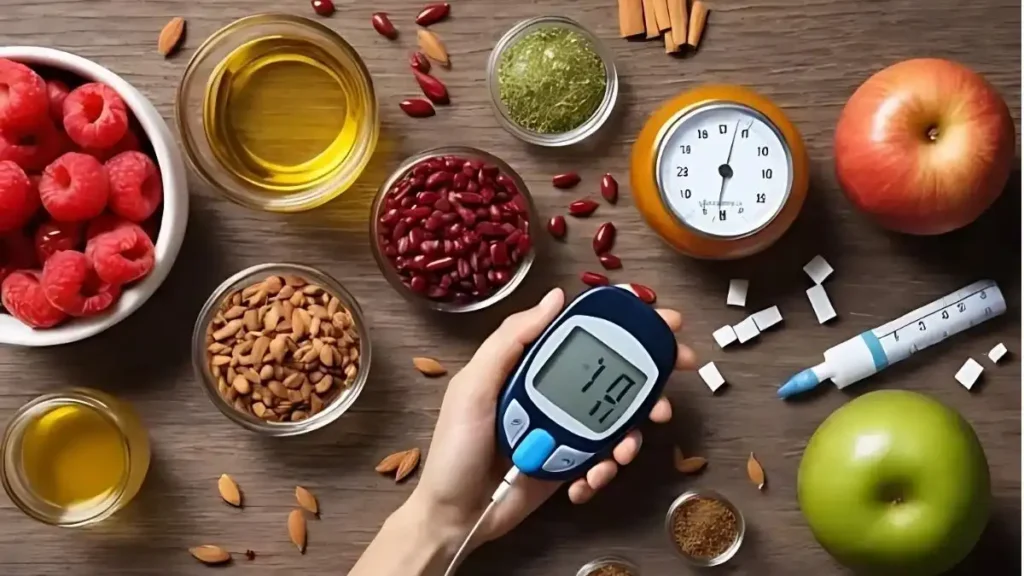Glycemic index (GI) scale is used to measures the rate at which foods that contain carbs raise the levels of blood sugar. Foods that are high GI have a sharp rise of blood sugar and low GI foods result in a low and gradual rise. People who live with diabetes or those who want to maintain steady energy levels need to know about the GI of the commonly consumed foods.

Poha Glycemic Index
Poha, a dry rice preparation common in India as a breakfast time staple, has a GI of 38-64 (depending on how it is prepared). Although it has a lesser glycemic effect than a conglomeration of rice-based foods, the glycemic effect can be further reduced by loading in vegetables or a protein source. Read more about Poha: Calories, Benefits, Glycemic Index & Easy Recipe Explained
Glycemic Index of Wheat
The GMC of products prepared using whole wheat flour, e.g. chapati, is approximately 45. This qualifies them as superior to the refined wheat products. The choice of whole grains assists in the normal rise and fall of the sugar levels in the blood.
Mango Glycemic Index
Mango fruit GI is between 51 and 56. They are high in vitamins and antioxidants which make them helpful; however, it is prudent that people looking after their blood sugar level take them moderately.
Glycemic Index of Ragi
Finger millet referred to as ragi has a GI of 54 to 68. It is a healthy grain and it has a slow release of glucose hence a good alternative as far as blood sugar level is concerned.
Guava Glycemic Index
Guava contains a GI of about 12 and thus a low-GI fruit. It has a high fiber level that facilitates easy digestion and stable sugar levels in the body.
Jaggery Glycemic Index
Jaggery has high GI of approximately 84. It remains a natural sweetener yet it can lead to soaring blood sugar levels due to which it should be taken with caution and more so by diabetic people.
chapati glycemic index
Whole wheat chapatis have a GI of about 45. They form the backbone of several diets and when taken in a moderated proportion, they could constitute a balanced diet regime.
Rice Glycemic Index , Brown vs. White
Brown rice GI is approximately 55 as opposed to white rice that is more in between 64 and 72. Switching from white rice to brown rice can help you better control your blood sugar, thanks to its lower glycemic index (GI) and higher fiber content.
Dal Glycemic Index
Majority of dals including masoor dal have low GI. They contain a lot of protein, as well as fiber and are great when it comes to having a stable blood sugar level.
Potato Glycemic Index
The glycemic index (GI) of potatoes ranges from 50 to 111, depending on the type and cooking method. Boiling and then cooling potatoes can lower their GI, but it’s still important to consume them in moderation. Read more recent articles like this at News.highzones.com
Bread Glycemic Index
Whole wheat bread is actually a GI anywhere between 51 and 69 in contrast with a white bread which may have a GI of 70 high. To have better control of blood sugar, one should consider changing a regular bread to whole grain bread.
G.I and its role in the Control of Sugar, BP and Heart Diseases
Diabetes, high blood pressure (BP) and heart disease is great concern to individuals and glycemic index (GI) of foods is a focal point to living with such conditions. Low-GI foods are beneficial in keeping blood sugar at an even keel, lower BP, and heart health. These conditions directly influence how you should manage your eating behavior. Read more recent articles like this at News.highzones.com
Diabetes (Sugar Disease)
Low-GI Foods: Add a lot of whole grains, legumes, and vegetables, such as ragi, guava, and dal. These foods cause a gradual release of glucose into the body and they assist in the prevention of the surges in blood sugar levels.
Keep Away High-GI Food: Avoid excessive intake of white rice, white bread and sugary food because such foods trigger increase in blood sugar quickly.
High blood pressure (BP)
Emphasis on Low-GI and Fiber-Rich Diets: Food items such as whole grains, leafy vegetables, and beans are beneficial in controlling BP and the health of the heart.
Good Fats: Olive oil, avocados and nuts contribute to heart health by reducing inflammation.
Avoid Processed Foods: Processed foods that contain a lot of salt and sugar would raise BP and sugar.
Heart Disease
Introduce High-fiber Low-GI Foods: Go ahead with ragi, whole wheat and dal to reduce the cholesterol levels and maintain a healthy heart.
Healthy Fats: Saturated fats clog the arteries causing plaque build up. unsaturated fats found in olive oil and almonds can lower the clogging fat in the body.
Curtail Refined Carbs:
White bread and fried foods can raise your blood sugar and cholesterol levels, so it’s best to avoid them. Read more recent articles like this at News.highzones.com
General Tips
Whole Grains Versus Refined Grains: Brown rice and whole wheat bread are superior alternatives in dealing with sugar, BP and heart conditions.
- Increased Vegetables and Fruits: Spinach and Guava are low-GI foods and they are nutritious.
- Eliminate Sweet And Processed Foods: Drink fewer sugary drinks and sweets to balance the BP and blood sugar levels.
- Drink lots of water: it will replace the sweet or caffeinated drinks.
With the emphasis placed on low-GI food, individuals with diabetes, high BP and heart disease have a better chance to control their health.
Conclusion
The realization of glycemic index of food in our daily diet can help in making a wise decision about what to consume. The use of examples of low-GI foods such as whole grains, legumes, and some fruits can help with keeping the levels of sugar in the blood and remaining healthy.
Disclaimer: Glycemic index values stated are estimations and do change according to methods of preparation and the reaction of the person to it. Healthcare professionals or nutritionists always encourage individuals to seek their services for specific dietary information.
Read Top Articles:










